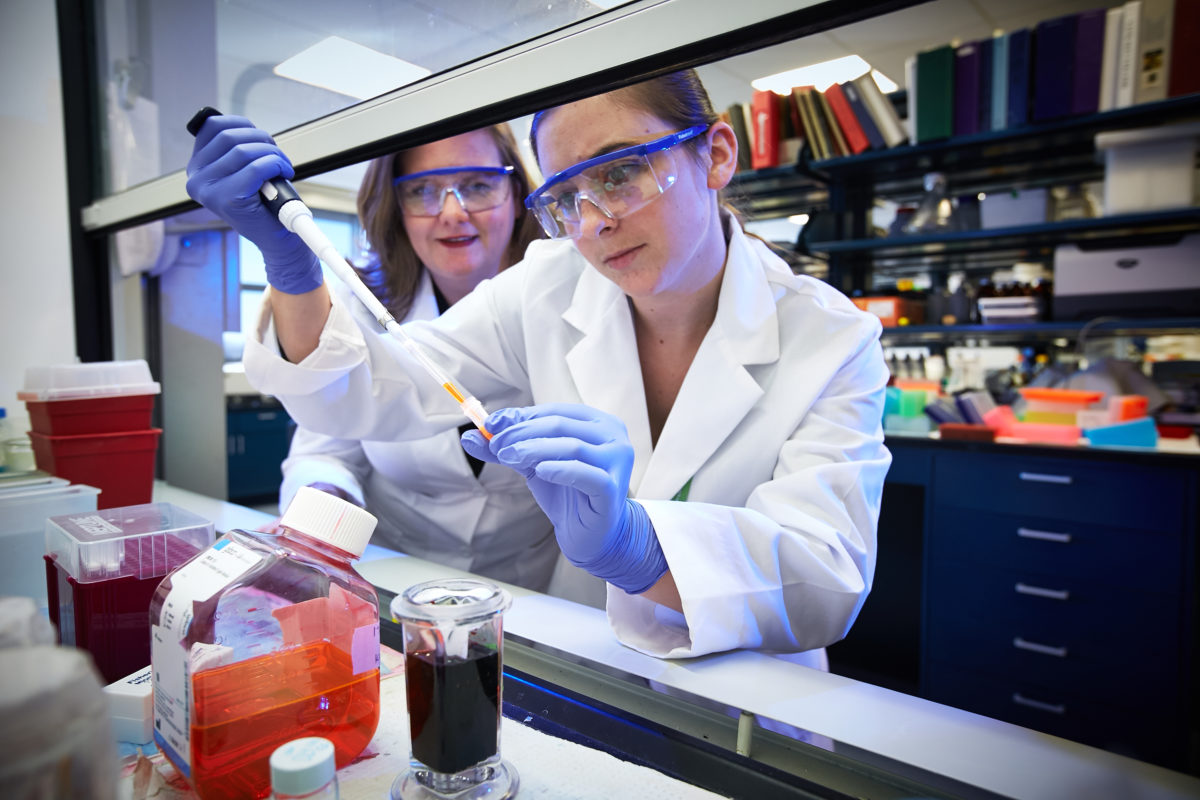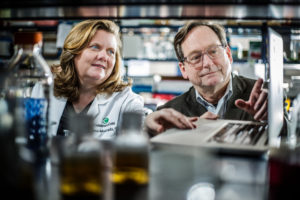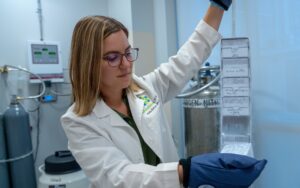A report published last spring in the journal of the National Cancer Institute ranked Delaware higher than any other state for the incidence of what is known as triple-negative breast cancer (TNBC).
Delaware’s experience supports national findings that African-American women have twice the risk for TNBC as Caucasian women. Data from the Helen F. Graham Cancer Center & Research Institute at Christiana Care also shows that despite aggressive screening efforts and similar rates of mammograms, more than one quarter of the African-American women diagnosed during an eight-year period had late stage or advanced disease; this was true for only 15 percent of Caucasian women.
Triple-negative breast cancer gets its name because the cells test negative for three known protein receptors — estrogen, progesterone and HER2. Right now these receptors are the only treatment targets for today’s breast cancer medicines.
“TNBC is fast-growing, metastasizes quickly and carries the burden of poor survival,” explained Senior Clinical Scientist Jennifer Sims-Mourtada, Ph.D., at the Center for Translational Cancer Research (CTCR). “We want to find out what is driving development of TNBC, so we can more accurately predict the risk of this aggressive cancer among all women in Delaware and to determine how external risk factors among different population groups play a role to try to mitigate those risks.”
Dr. Sims-Mourtada and her team are testing the hypothesis that the body’s response to inflammation contributes to the development and growth of breast cancer and may also determine what type of breast cancer develops. The researchers are collaborating with Swati Pradham-Bhatt, Ph.D., director of the CTCR’s tissue engineering group, to grow and study TNBC cells in the lab and to use them to test currently approved anti-inflammatory drugs, some of which may potentially improve treatment outcomes for women with TNBC.
Previously, Dr. Sims-Mourtada’s research showed that a growth factor associated with inflammation and wound healing, known as the hedgehog pathway, can promote the growth of highly resistant cells after treatment with radiation and chemotherapy. Her team is currently investigating how chemotherapy and radiation may activate the transformation of tumor cells into stem-like cancer cells that show increased resistance and the potential to spread or metastasize.
Because TNBC does not always have the suspicious mammographic features of breast cancer, it is likely to be missed on routine mammographic screening. Better diagnostic tools are needed.
To that end, Dr. Sims-Mourtada’s lab is also working to develop a blood test that one day could be used as a tool for the initial diagnosis of TNBC, as well as to monitor disease progression over time to guide further treatment.
Dr. Sims-Mourtada’s research on TNBC is an important component of a broad research initiative, launched by the Graham Cancer Center and Christiana Care’s Breast Health program, to improve the lives of breast cancer patients and eliminate disparities in breast cancer outcomes in Delaware and communities throughout the nation.



